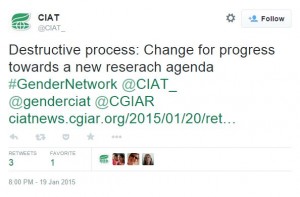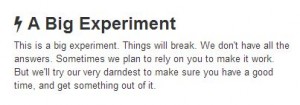 Blogs are ephemeral. Today someone referenced a broken link on my blog back from 2005. I cruised across the page and alas, found many dead links. There was one quote on knowledge management that is still resonant to me… and the blog is gone. (Some of the posts are still visible via the amazing Wayback machine. For example here and here.)
Blogs are ephemeral. Today someone referenced a broken link on my blog back from 2005. I cruised across the page and alas, found many dead links. There was one quote on knowledge management that is still resonant to me… and the blog is gone. (Some of the posts are still visible via the amazing Wayback machine. For example here and here.)
Olaf’s Notebook: What is the relation between KM and inner reform?This post from Olaf’s Notebook speaks for itself: What is the relation between KM and inner reform?Knowledge management as social system change requires an inner reform of people involved. Where KM projects are usually ‘sold’ on the basis of business cases, they should be sold on the basis of ‘humanity and consciousness cases’ to be effective drivers for social system change.What can we do if we cannot cope with some aspects of our lives, if we fail in our relationships with other people, if we destroy our opportunities for the future, if we become ill because of work stress? Good chance that we will be advised to start psychotherapy.What happens if our organizations destroy societal trust relationships, opportunities for future generations, if they make workers ill because of work stress, or exploit workers and children in low-wages countries? Good chance organizational leadership receives shareholders’ praise, bonuses, and fame as a captain of industry. No psychotherapy there, and one could only wonder about this double standard.Corporations and governments debate endlessly on corporate social responsibility, draw up sustainability reporting schemes, codes of conduct etc. I do not deny these agreements can represent steps forward toward sustainable corporate policies. However, what is right or wrong for companies and company leaders to do is not so hard to imagine”
Source: Full Circle Online Interaction Blog: 11/01/2005 – 12/01/2005
In a bit of kismet, the Straits Knowledge newsletter arrived today with a link to a paper from my friend Patrick Lambe on Knowledge Organization and Social Impact. There is resonance from Olaf’s writing in 2005.
KM as an inner practice. Knowledge (in all its forms and practices) as a core for social impact. Lots of good stuff. Only need time and presence to weave the ideas and make sense. Or to lose things and to find them anew with fresh eyes. To destroy to create.
Ah, I dream.

 Simone Staiger, of CIAT, wrote about the experience on her
Simone Staiger, of CIAT, wrote about the experience on her 
